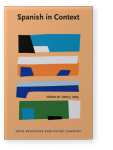Vol. 20:3 (2023) ► pp.438–463
Los puertorriqueños se les está cayendo la “a”
Variably marked datives in Puerto Rican Spanish
This study addresses a gap in the extensive literature on Spanish indirect objects by offering a study of unmarked datives (i.e., Ø eso le pones un papel de aluminio ‘to that you put an aluminum foil’; PRESEEA 2001). Analyzed are the linguistic constraints on the variable absence of dative marker a ‘to’ in corpora of spoken Puerto Rican Spanish, in which the rate of marker absence is 33% (n = 380). Results of logistic regression analysis reveal that unmarked datives occurred with low frequency, non-prototypical dative verbs. Inanimate referents favored the absence of the dative marker, as did complex DPs, where the dative phrase and the clitic pronoun+verb are not adjacent. The findings are discussed from the twin perspectives of analogy as a mechanism of change and frequency effects: unmarked datives seem to most affect items at the margins of the dative category, in terms of both verbs and referents.
Article outline
- 1.Introduction
- 2.Variability in dative constructions
- 2.1Unmarked datives in (Puerto Rican) Spanish
- 3.Methodology
- 3.1Corpora
- 3.2Extraction and coding procedure
- 4.Results
- 5.Discussion
- 6.Conclusions
- Acknowledgements
- Notes
-
References
